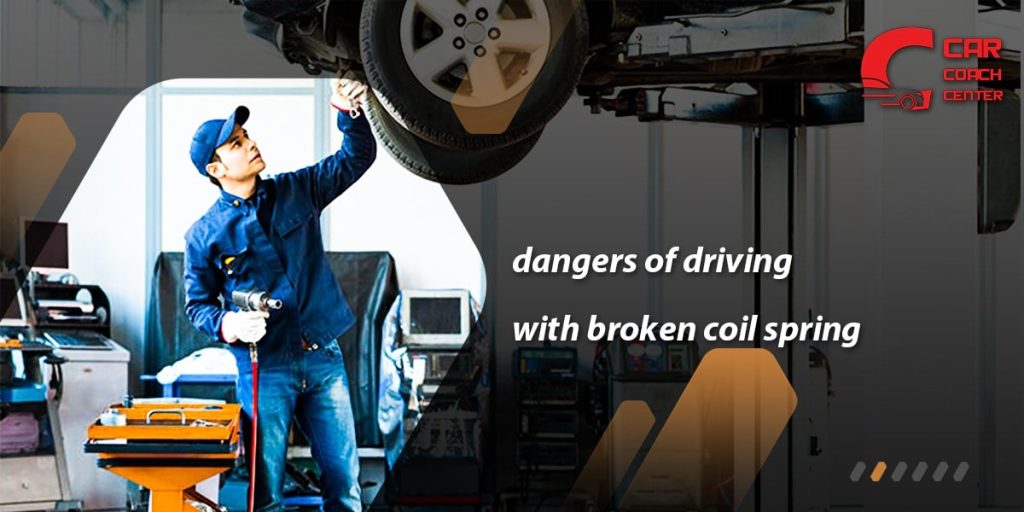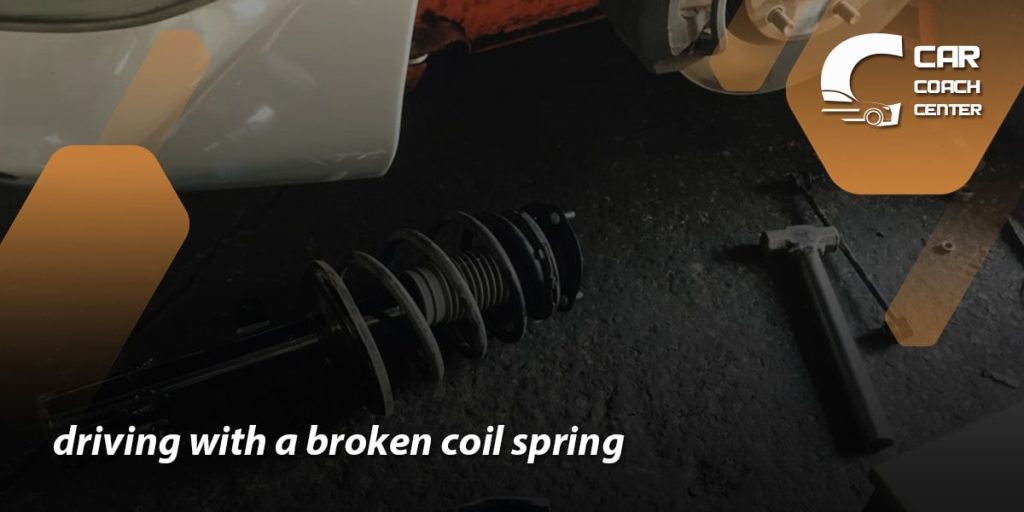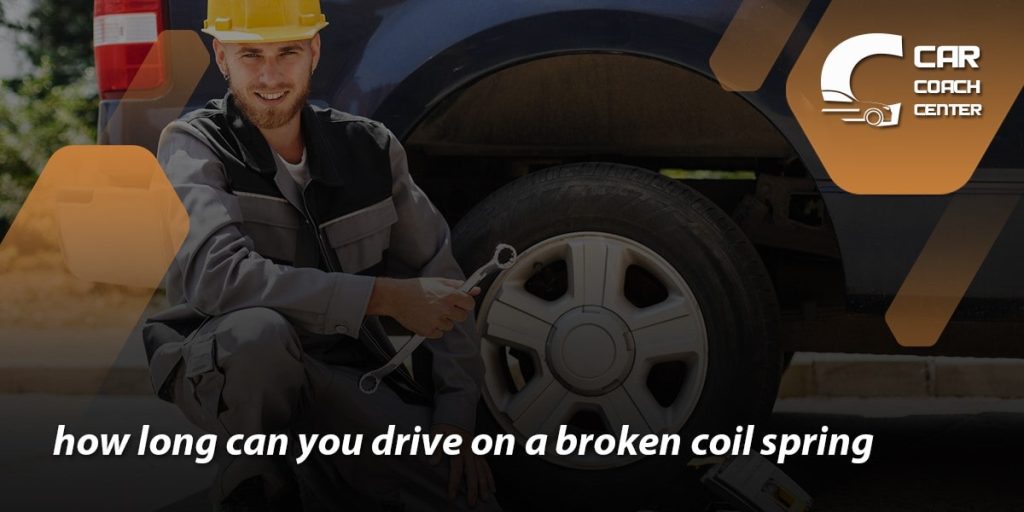Can You Drive With A Broken Coil Spring
Your vehicle’s suspension system plays a crucial role in providing a smooth and safe ride, and one of its key components is the coil spring. Responsible for absorbing shocks and supporting the vehicle’s weight, a coil spring that breaks can have significant consequences on your driving experience.
The question arises: Can you drive with a broken coil spring? In this article, we will delve into the world of coil springs, exploring the symptoms and risks associated with a broken coil spring, its impact on vehicle performance, and the safety considerations of driving under such circumstances. We will also discuss the potential damage it can cause to your suspension system and highlight the importance of prompt repair.

Furthermore, we will explore the options for fixing a broken coil spring, from DIY methods to seeking professional assistance, and provide preventive maintenance tips to extend the lifespan of your coil springs. Whether you’re a car enthusiast or simply concerned about your vehicle’s well-being, understanding the implications of a broken coil spring is essential for maintaining a safe and reliable ride.
Symptoms and Risks: Identifying a Broken Coil Spring
Identifying a broken coil spring in your vehicle is crucial to ensuring your safety on the road. Here are some key symptoms to watch out for:
Uneven Ride Height
An uneven ride height is one of the most apparent signs of a broken coil spring. You may notice that one corner of your vehicle sits noticeably lower than the others, creating an imbalanced appearance.
Vehicle Tilting or Sagging
A broken coil spring can cause your vehicle to tilt or sag on one side. This can result in a noticeable lean, especially when going around corners or during turns.
Excessive Bouncing or Nose Diving
When driving over bumps or dips in the road, you may experience excessive bouncing or nose-diving. A broken coil spring cannot properly absorb shocks, leading to a bouncy and uncomfortable ride.
Tire Wear Irregularities
A broken coil spring can cause uneven tire wear. Check for signs of abnormal wear patterns, such as excessive wear on one side of the tire or feathering along the tread.
Clunking or Rattling Noises
Listen for clunking or rattling noises from the suspension area when driving over bumps or rough surfaces. These noises can indicate that the broken coil spring is causing parts of the suspension to rub against each other.
The risks of driving with a broken coil spring should not be underestimated. A compromised suspension system can lead to several hazards, including:
Reduced Handling and Stability
A broken coil spring affects the vehicle’s ability to maintain proper handling and stability, making it more difficult to control during maneuvers or emergencies.
Poor Braking Performance
The compromised suspension system due to a broken coil spring can negatively impact braking performance, increasing the stopping distance and potentially causing accidents.
Increased Tire Wear
Uneven weight distribution caused by a broken coil spring can lead to accelerated tire wear, reducing lifespan and potentially causing tire failure.
Damaged Suspension Components
Continued driving with a broken coil spring can put additional stress on other suspension components, leading to premature wear and potential damage to shocks, struts, and other vital parts.
Impact on Vehicle Performance: Handling, Stability, and Braking
A broken coil spring can significantly impact your vehicle’s overall performance, affecting its handling, stability, and braking capabilities. Understanding these effects is essential for realizing the importance of addressing a broken coil spring promptly.
Handling
Coil springs play a vital role in maintaining your vehicle’s proper balance and weight distribution. When a coil spring breaks, the affected corner of the vehicle experiences a loss of support and suspension control. This can result in compromised handling characteristics, making it more challenging to steer the vehicle accurately. You may notice increased body roll during turns, reduced responsiveness, and a general sense of instability.
Stability
The stability of a vehicle is closely tied to its suspension system, and a broken coil spring can undermine this stability. With an uneven weight distribution, the vehicle may exhibit a noticeable lean or tilt to one side, especially during cornering. This imbalance can lead to a loss of control and compromise your ability to navigate curves or sudden maneuvers safely. It is important to note that compromised stability increases the risk of accidents, particularly in emergencies.
Braking
The braking system relies on a balanced suspension to ensure effective braking performance. A broken coil spring can disrupt this balance, resulting in uneven weight transfer during braking. This can lead to an unequal distribution of braking force among the wheels, causing the vehicle to pull to one side or experience longer braking distances. The compromised braking performance increases the risk of collisions, particularly in situations that require quick and precise stops.

Safety Considerations: The Importance of Immediate Repair
Driving with a broken coil spring poses significant safety risks that should not be taken lightly. Understanding the importance of immediate repair is crucial for maintaining your safety and the safety of others on the road.
Handling and Control
A broken coil spring compromises the stability and handling of your vehicle. An uneven suspension compromises the vehicle’s ability to respond to steering inputs and maintain control. This can lead to unpredictable handling characteristics, especially during sudden maneuvers or emergencies. The risk of losing control of the vehicle increases, putting you and other road users in danger.
Increased Accident Risk
The compromised handling, stability, and braking performance resulting from a broken coil spring significantly increase the risk of accidents. The inability to maintain control during turns, difficulty maneuvering, and longer braking distances can all contribute to a higher likelihood of collisions. It is important to prioritize the safety of yourself, your passengers, and others on the road by addressing the issue promptly.
Suspension System Damage
Driving with a broken coil spring can stress other suspension components excessively. The additional strain may lead to premature wear and damage to shocks, struts, control arms, and other critical suspension system parts. This can result in more extensive repairs and increased costs down the line.
Tire Wear and Failure
A broken coil spring can cause uneven weight distribution on the tires, leading to accelerated tire wear. Uneven tire wear patterns can compromise traction and reduce the lifespan of your tires. In extreme cases, it can even lead to tire failure, increasing the risk of blowouts or sudden loss of control.
Legal and Insurance Implications
Driving with a known mechanical issue, such as a broken coil spring, may have legal and insurance implications. Driving with a visibly compromised suspension system may violate road safety regulations depending on your jurisdiction. Moreover, in an accident, insurance claims can be affected if it is determined that the broken coil spring contributed to the incident.

Mechanical Consequences: Potential Damage to the Suspension System
Driving with a broken coil spring can have far-reaching consequences, especially for your vehicle’s suspension system. The compromised integrity of the spring can lead to various mechanical issues and potential damage, resulting in costly repairs and safety hazards. Here are some potential consequences to be aware of:
Strain on Shocks and Struts
A broken coil spring stresses the shocks and struts of your suspension system. These components are responsible for absorbing shocks and maintaining stability. With a broken coil spring, the shocks and struts have to work harder to compensate for the loss of support, leading to premature wear and potential failure. Continued driving under these conditions can result in the need for expensive replacements.
Control Arm and Ball Joint Wear
Your suspension system’s control arms and ball joints work with the coil springs to provide control and stability. When a coil spring breaks, the increased load, and movement can cause excessive wear on these components. Over time, this wear can lead to play in the suspension system, negatively impacting handling and compromising safety.
Damaged Sway Bars
Sway bars, also known as stabilizer bars, minimize body roll during cornering. When driving with a broken coil spring, the uneven distribution of weight and compromised suspension dynamics can strain the sway bars more. This strain can lead to bending or even breaking of the sway bars, further compromising the stability and control of your vehicle.
Impact on Wheel Alignment
A broken coil spring can disrupt the wheel alignment settings of your vehicle. Uneven suspension due to the broken spring can cause wheels to tilt, resulting in incorrect camber, caster, and toe angles. Improper wheel alignment affects handling and stability and leads to accelerated tire wear. Replacing the broken coil spring and realigning the wheels is crucial to maintain proper vehicle dynamics and maximize tire lifespan.
Stress on Other Suspension Components
The broken coil spring can stress other suspension components, including bushings, links, and mounts. These components are not designed to bear the additional load caused by a broken spring and can wear out prematurely or even fail. Failing to promptly address the broken coil spring can result in a cascade of damage to multiple suspension parts, leading to more extensive repairs.
DIY or Professional Help? Repairing a Broken Coil Spring
When faced with a broken coil spring in your vehicle, you may wonder whether to tackle the repair yourself or seek professional help. Both options have advantages and considerations, depending on your level of expertise, resources, and the complexity of the repair. Let’s explore the DIY and professional approaches to repairing a broken coil spring:
DIY Repair
Skill and Experience
Repairing a broken coil spring requires some mechanical knowledge and experience. Consider a DIY repair if you have experience working on suspension systems and feel confident in your abilities. However, assessing your skills realistically is important to ensure you can safely and effectively complete the task.

Tools and Equipment
A DIY repair on a broken coil spring requires specific tools and equipment. You will need spring compressors to safely remove and install the coil spring and basic hand tools for disassembling and reassembling the suspension components. Ensure you have access to the necessary tools before attempting the repair.
Safety Considerations
Safety should be a top priority during any repair work. Working with coil springs can be dangerous, as they store significant potential energy. Improper handling can lead to severe injuries. If you choose the DIY route, following safety procedures, wearing appropriate protective gear, and exercising caution throughout the repair process are essential.
Professional Help
Expertise and Knowledge
Professional mechanics have extensive experience and expertise repairing suspension systems, including broken coil springs. They possess the necessary skills and knowledge to properly diagnose the issue, recommend appropriate repairs, and ensure the safety and functionality of your vehicle.
Specialized Equipment
Repairing a broken coil spring often requires specialized equipment and facilities that professional auto repair shops have readily available. They can access high-quality spring compressors, diagnostic tools, and other equipment necessary for safe and efficient repair.
Warranty and Guarantee
Many reputable auto repair shops offer warranties and guarantees on their work. By seeking professional help, you can have peace of mind knowing that the repair is backed by a warranty, protecting you in case of any unforeseen issues.
Time and Convenience
Repairing a broken coil spring can be time-consuming, especially if you must familiarize yourself with the process. Opting for professional help saves you valuable time and effort, as the mechanics can efficiently diagnose and repair the issue, getting you back on the road safely.
Preventive Maintenance: Extending the Lifespan of Coil Springs
Coil springs are integral components of your vehicle’s suspension system, and taking proactive measures to maintain them can help extend their lifespan and ensure optimal performance. Following preventive maintenance practices can minimize the risk of coil spring failures and costly repairs. Here are some tips to help you extend the lifespan of your coil springs:
Regular Visual Inspections
Perform regular visual inspections of your vehicle’s suspension system, including the coil springs. Look for signs of corrosion, cracks, or any visible damage. If you notice any abnormalities, such as sagging or uneven ride height, consult a professional mechanic for a thorough inspection.
Avoid Overloading
Overloading your vehicle can stress the suspension system, including the coil springs. Follow the manufacturer’s guidelines regarding load limits and avoid carrying weight beyond the recommended capacity. Excessive loading can cause the springs to weaken and lead to premature failure.
Smooth Driving Habits
Adopting smooth driving habits can help reduce stress on the suspension system, including the coil springs. Avoid harsh braking, accelerating, and sudden maneuvers, subjecting the springs to unnecessary strain. Smooth driving helps maintain the longevity of the suspension components.
Avoid Potholes and Rough Roads
Potholes and rough roads can cause significant damage to the suspension system, including the coil springs. Whenever possible, try to avoid driving over potholes and rough terrain. If you encounter unavoidable road imperfections, reduce your speed and navigate them carefully to minimize the impact on the springs.
Regular Wheel Alignments
Proper wheel alignment is crucial for maintaining the balance and even distribution of weight on the coil springs. Regularly scheduled wheel alignments ensure the camber, caster, and toe angles are within the manufacturer’s specifications. Correct alignment reduces unnecessary stress on the springs and helps prevent premature wear.
Timely Suspension System Maintenance
Stay on top of regular maintenance for your suspension system, as it directly impacts the condition of the coil springs. Follow the manufacturer’s recommended service intervals for inspections, lubrication, and maintenance of suspension components. Regular maintenance can identify and address issues before they escalate into major problems.
Quality Coil Spring Replacements
Opt for high-quality OEM (Original Equipment Manufacturer) or aftermarket springs if you need to replace a coil spring. Quality springs are designed to withstand the demands of your vehicle’s weight and provide proper support. Consult a professional mechanic to ensure you choose the correct springs for your vehicle.
conclusion
In conclusion, understanding the implications of a broken coil spring is vital for maintaining a safe and reliable driving experience. The symptoms and risks associated with broken coil springs, such as compromised handling, stability, and braking, highlight the importance of addressing the issue promptly.
Safety considerations should never be underestimated, as driving with a broken coil spring can cause accidents and potentially damage the suspension system. Whether you choose a DIY approach or seek professional help, repairing a broken coil spring is essential for ensuring optimal vehicle performance and safeguarding yourself and others on the road.
By following preventive maintenance practices, such as regular inspections, smooth driving habits, and timely maintenance, you can extend the lifespan of your coil springs and minimize the risk of failures. For more information on car maintenance and safety, visit carcouchcenter.com, where you’ll find valuable resources and expert advice to help you keep your vehicle in excellent condition. Drive safely!
Can you drive with a broken coil spring?
It is not recommended to drive with a broken coil spring
How do I know if my coil spring is broken?
Look for signs such as uneven ride height, vehicle tilting or sagging, excessive bouncing or nose-diving, clunking or rattling noises, and abnormal tire wear.
Should I repair a broken coil spring or seek professional help?
If you have the necessary skills, tools, and experience, you can attempt a DIY repair.


